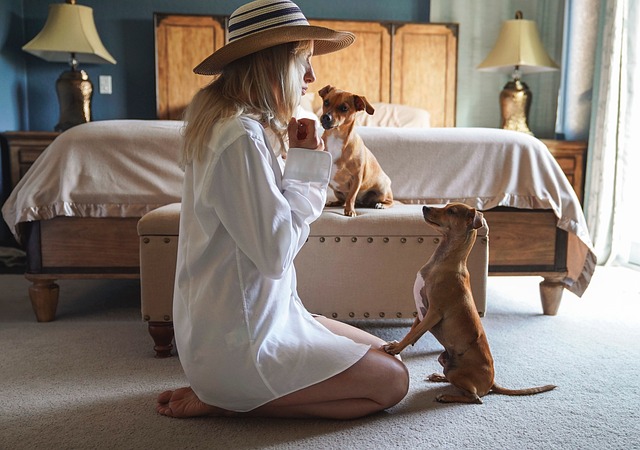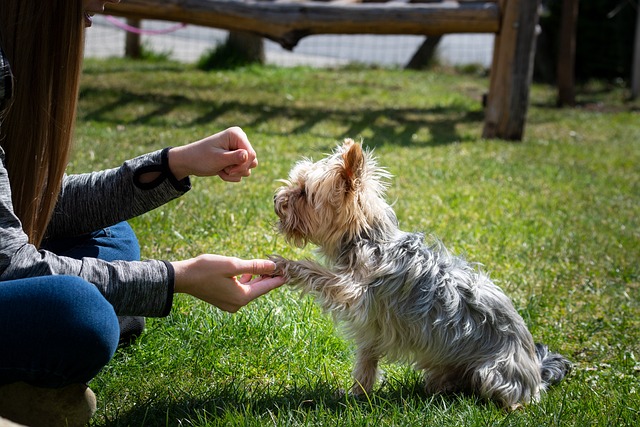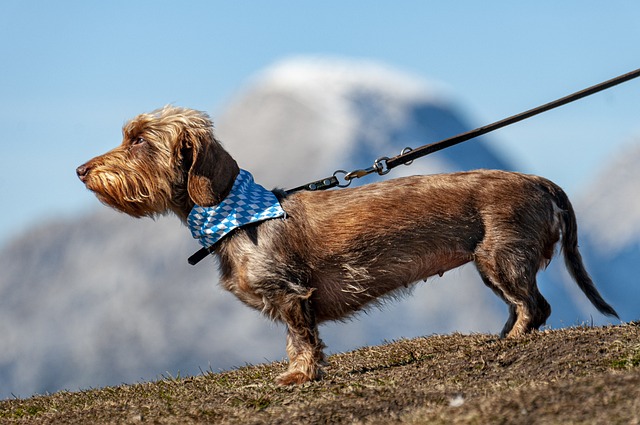Puppies and dogs are a joy to have around, but they can also be a lot of work. You need to work hard at raising them so that they become well-behaved and happy companions for life. Here are some tips and tricks for how to raise a happy puppy or dog:
Start early and be consistent with socialization
Socialization is the key to a well-behaved and happy dog. Dogs need to be exposed to new things and people at an early age, so you should start them on this as soon as they are born. The more exposure they have, the better.
Dogs should also be exposed to other dogs, people, noises, places, and so on. This will help them become used to these situations while they are still young which will make them easier for later puppy training lessons.
Use positive reinforcement
This is one of the simplest and most effective ways to train your puppy or dog, so it’s worth repeating: Positive reinforcement means rewarding good behavior with treats or praise while punishing bad behavior with timeouts. If you want your pet to stop jumping on people, for example, you could say “no” very firmly and then give him lots of belly rubs when he stops doing it. That way he’ll associate the action with an unpleasant consequence (getting his butt rubbed) rather than something positive (being rewarded).
Attend obedience classes
It’s important for your puppy to be socialized from a young age. Socialization can help them avoid some of the most common health problems in dogs, like heart disease and diabetes. The best way to ensure that your puppy is well-socialized is by attending obedience classes with their trainer.
- How do I find a good trainer? One way is by asking friends or family if they know someone who has done this before; another option is going online and looking for reviews of local businesses or organizations (like pet training websites).
- What should I expect from my puppy’s training class? You should expect positive reinforcement during instruction periods because positive reinforcement will encourage good behavior through repetition rather than punishment which could cause negative behavior patterns later on when you have an emergency situation where time isn’t available for long lectures about why something shouldn’t happen again just yet!
Supervise interactions
Supervising your dog’s interactions is a crucial aspect of socialization. Even though you may have a friendly and well-behaved dog, it’s essential to monitor their interactions with other dogs, people, and new environments to ensure their safety and prevent negative experiences. Here are some tips to help you supervise your dog’s interactions effectively:
- Stay alert and focused: When introducing your dog to new people, animals, or environments, stay focused and keep a watchful eye on your dog’s behavior. Look for signs of fear, aggression, or anxiety, and be prepared to intervene if necessary.
- Use a leash: When meeting new dogs or exploring new environments, it’s best to keep your dog on a leash to prevent them from running off or getting into trouble. A leash can also help you control your dog’s movements and prevent them from jumping on people or other animals.
- Know your dog’s limits: Every dog has its own temperament and personality, and it’s crucial to know your dog’s limits and comfort levels. If your dog seems uncomfortable or scared, take a step back and give them some space to relax.
- Reward good behavior: When your dog behaves well during socialization, reward them with treats and praise to reinforce positive behavior and encourage them to continue behaving appropriately.
- Seek professional help if needed: If your dog exhibits aggressive or fearful behavior during socialization, seek the help of a professional dog trainer or behaviorist to address the issue and prevent it from escalating.
By supervising your dog’s interactions and being prepared to intervene if needed, you can help your dog become a well-socialized and happy companion that enjoys meeting new people and animals, and exploring new environments.
Be patient and calm
You need to be patient, calm, and firm. This means not giving in to the dog’s bad behavior or rewarding him for good behavior. For example, if your puppy is chewing on your slippers or couch, don’t stop him from doing so by making a big deal out of it. Instead, try teaching him how to use his mouth appropriately and redirecting his attention toward toys instead of objects that are off-limits (such as shoes).
If you’re having trouble keeping control of your pet during training sessions, consider hiring a professional trainer who has experience working with animals like dogs or cats.
Conclusion
By following these tips, you can keep your puppy or dog safe and happy. As long as you’re consistent with their training, positive reinforcement, and socialization, your pup will be well-behaved and happy when they grow up!




